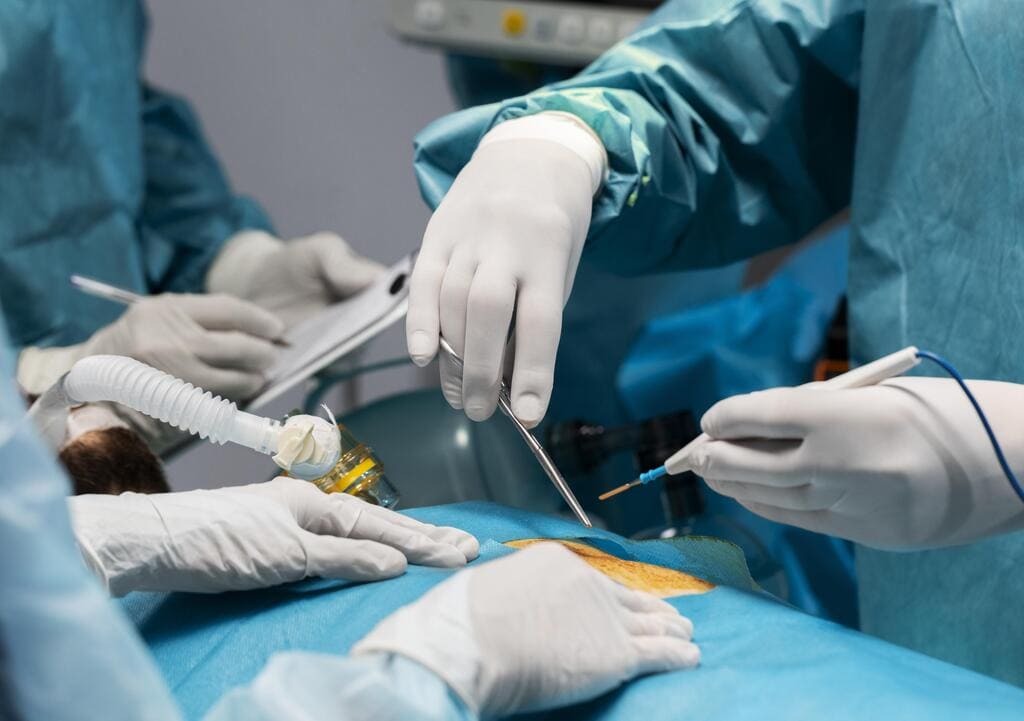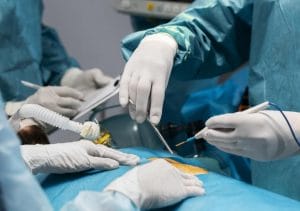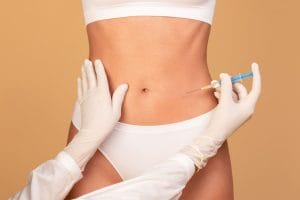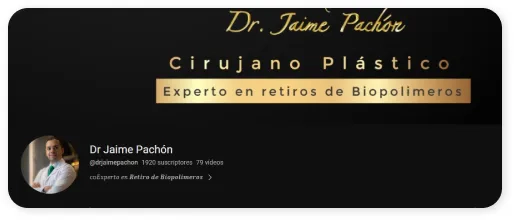Colombia has become a top choice for individuals seeking safe biopolymer removal services. The country offers advanced medical technologies and skilled surgeons, making it a preferred destination for patients facing complications from unauthorized biopolymer injections.
The growing demand for professional removal services is a response to the risks associated with these substances. Colombia’s reputation in medical tourism continues to rise, attracting international patients who seek effective solutions and quality care.
Understanding Biopolymers and Their Risks
Biopolymers are synthetic substances that, when improperly used, can lead to significant health risks. Understanding these risks is crucial for anyone considering their use or removal.
Health Implications of Unauthorized Biopolymers
Unauthorized biopolymers, commonly injected as fillers, include substances like liquid silicone and methyl methacrylate. These materials are not intended for human use and can cause various complications such as:
- Inflammation and swelling
- Deformities in affected areas
- Severe infections
- Potentially life-threatening issues, including organ failure or embolisms
Patients who undergo unauthorized procedures often experience these negative health implications, which may not become apparent until months or years after the injections.
Symptoms and Warning Signs
Individuals who have received unauthorized biopolymer injections should be vigilant for symptoms that indicate complications. Common warning signs include:
- Swelling and persistent pain in the injection site
- Color changes in the skin surrounding the area
- Unusual lumps or growths where the substance was injected
Recognizing these symptoms early on is essential to avoid further health complications and prompt necessary medical intervention.
Long-term Risks Involved
The long-term effects of unauthorized biopolymer injections are particularly concerning. Chronic inflammation, scarring, and tissue damage may occur, leading to:
- Increased risk of future surgeries
- Possible psychological impacts due to dissatisfaction with physical appearance
- Continued medical complications requiring ongoing treatment
Understanding these long-term risks aids individuals in making informed choices regarding their health and the necessity of biopolymer removal.
Why Choose Colombia for Biopolymer Removal
Colombia has positioned itself as a top choice for individuals seeking safe biopolymer removal. With its high-quality medical services, experienced professionals, and a welcoming environment for international patients, Colombia stands out in the field of medical tourism.
Colombia’s Advanced Medical Infrastructure
The medical infrastructure in Colombia boasts modern facilities equipped with advanced technology. Hospitals and clinics adhere to international standards of care, ensuring that all surgical procedures, including biopolymer removals, are conducted in safe and sterile environments. This commitment to excellence is further enhanced by a regulatory framework that prioritizes patient safety and well-being.
Esteemed Surgeons in Colombia
Colombia is home to highly regarded surgeons who specialize in biopolymer removal. Their expertise and dedication to patient care have made significant contributions to the field of reconstructive and aesthetic surgery.
Dr. Jaime Pachón’s Expertise
Dr. Jaime Pachón is recognized for his extensive experience in biopolymer extraction, having successfully treated thousands of patients. His training in Reconstructive and Aesthetic Plastic Surgery equips him with the skills needed to address complex cases effectively. He utilizes innovative techniques to ensure minimal tissue damage while maximizing biopolymer removal outcomes.
Cities Leading in Medical Tourism
Major cities in Colombia, such as Bogotá and Cali, have emerged as prime destinations for medical tourism. These urban centers offer a wealth of resources, including top-tier medical facilities and skilled healthcare professionals. Patients can easily access comprehensive care that includes pre-operative evaluations, surgical procedures, and post-operative support, all within a vibrant and culturally rich environment.
The Biopolymer Removal Procedure
The biopolymer removal procedure is a crucial step for individuals seeking to eliminate harmful substances injected into their bodies. This process involves careful evaluation, tailored surgical techniques, and comprehensive post-operative care to ensure a successful recovery.
Initial Patient Evaluation
Before undergoing the procedure, a thorough initial evaluation is conducted. This assessment is vital in determining the best approach for each patient based on their individual circumstances.
Use of Magnetic Resonance Imaging
Magnetic resonance imaging (MRI) plays a key role in the evaluation process. This imaging technique is used to visualize the exact location and extent of biopolymer infiltration in the body. The detailed images help surgeons formulate a precise surgical plan, minimizing risks and enhancing the likelihood of a successful outcome.
Personalized Surgical Planning
Following the MRI, surgeons engage in personalized surgical planning. This involves discussing findings with the patient and developing a strategy that aligns with their specific health conditions and desired outcomes. Individualized approaches ensure that each patient receives the most effective and safe treatment possible.
Surgical Techniques and Safety Protocols
The actual surgical procedure follows a comprehensive plan aimed at safely removing the biopolymers. Surgeons implement advanced techniques to maximize results while prioritizing patient safety throughout the process.
The ‘Butterfly Wing’ Method
Among the surgical techniques discussed, the ‘butterfly wing’ method is particularly noteworthy. This technique is designed to efficiently extract the biopolymer material while preserving surrounding tissues as much as possible. It allows for larger volumes of material to be extracted with reduced damage to healthy areas.
Ensuring Patient Comfort
Patient comfort is paramount during the procedure. A combination of local anesthesia and sedation is often administered to minimize discomfort. The surgical team’s expertise in managing anesthesia helps create a supportive environment where patients feel safe and relaxed during their surgery.
Post-operative Care and Recovery
Post-operative care is integral to achieving optimal recovery. After surgery, patients receive detailed instructions to facilitate healing and minimize complications.
Managing Swelling and Tissue Recovery
Patients typically use drainage tubes for several days to manage swelling and fluid accumulation. Wearing compression garments is also recommended to support tissue recovery. Regular follow-ups with the surgical team help monitor healing progress and address any concerns promptly.
Guidelines for Rapid Recovery
To ensure a swift recovery, patients are advised to follow specific guidelines. These include avoiding strenuous activities during the initial recovery phase and adhering strictly to post-operative care instructions. Most patients can expect to return to their normal activities within 10 to 12 days, provided they follow proper protocols.
Addressing Complications and Ensuring Patient Safety
Ensuring patient safety during and after biopolymer removal is paramount. The complexities of the procedure necessitate a thorough understanding of possible complications and the importance of surgeon expertise.
Common Complications Post-Removal
Following biopolymer removal, patients may face several complications, which can vary in severity. The most common complications include:
- Infection: An infection can occur at the surgical site, necessitating prompt medical attention to manage symptoms and prevent further complications.
- Bleeding: Post-operative bleeding can happen, leading to hematomas that may require additional intervention to resolve.
- Scarring: While every surgical procedure poses a risk of scarring, proper surgical techniques and post-operative care can significantly reduce its severity.
- Adverse Reactions to Anesthesia: Some patients may experience side effects related to local or general anesthesia, underscoring the importance of thorough pre-operative assessments.
The Role of Surgeon Expertise in Mitigating Risks
The qualifications and experience of the surgeon play a crucial role in minimizing complications and enhancing patient safety. Esteemed surgeons in Colombia have honed their skills in biopolymer removal through years of specialized training and practice. Key factors include:
- Comprehensive Pre-Operative Evaluation: Skilled surgeons conduct in-depth assessments to identify individual risk factors and tailor surgical approaches accordingly.
- Advanced Surgical Techniques: The utilization of modern methods, such as the ‘butterfly wing’ technique, helps to ensure effective removal while preserving surrounding tissues.
- Excellent Post-Operative Care: Continuous monitoring and structured recovery protocols enable surgeons to address any complications swiftly, ensuring the best outcomes.
Patient education and open communication about potential risks are essential components in fostering a safe surgical experience. Patients can actively engage in their recovery process by adhering to post-operative guidelines and reporting any unusual symptoms promptly.
Psychological and Physical Impact on Patients
The journey towards recovery from biopolymer complications involves significant psychological and physical considerations. Living with the effects of unauthorized biopolymer injections can induce multifaceted challenges for patients, often influencing their overall well-being and quality of life.
Enhancing Quality of Life Post-Surgery
After undergoing biopolymer removal, many patients experience noteworthy improvements in their physical and emotional health. Some of the benefits include:
- Reduction of physical discomfort, such as swelling and inflammation, which can lead to a more active and fulfilling lifestyle.
- Restoration of body confidence, as the removal of biopolymers can significantly improve one’s appearance and self-image.
- Improved mental health, as alleviating physical symptoms often contributes to lower levels of anxiety and stress.
The successful removal procedure not only addresses physical ailments but can also lead to boosts in self-esteem. Patients frequently report feeling liberated from prior insecurities linked to biopolymer treatments.
Building Realistic Expectations and Emotional Support
One of the essential aspects of recovery is understanding the mental health ramifications associated with biopolymer removal. Patients are encouraged to engage in open discussions about their recovery journeys, including expected outcomes. Key elements include:
- Practicing realistic goal-setting regarding post-surgery results, which helps mitigate disappointment and anxiety.
- Receiving psychological support through counseling or support groups can provide additional avenues for coping and encouragement. This is vital for addressing the emotional scars caused by previous biopolymer injections.
- Establishing a strong support network involving healthcare professionals and family can facilitate a smoother transition through the recovery process.
By focusing on both the psychological and physical aspects of healing, patients can navigate their post-surgery lives with renewed hope and enhanced quality of life. This dual approach contributes to a more holistic recovery experience, facilitating a positive outlook on their health and well-being.
Colombia’s Position in Medical Tourism
Colombia has established itself as a prominent player in the medical tourism sector, drawing patients seeking quality care at reasonable prices. Its combination of expert practitioners and extensive medical facilities makes it a sought-after destination worldwide.
Affordability and Quality of Care
The cost of medical procedures in Colombia is significantly lower than in many Western countries, attracting international clients. This affordability does not compromise the quality of care provided. Patients can expect:
- Highly trained medical professionals with international certifications.
- Access to modern medical technologies and state-of-the-art facilities.
- Comprehensive care that includes pre-operative assessments and post-operative follow-ups.
Such factors make the country an appealing choice for those in need of medical procedures, including biopolymer removal.
Legal Support and Patient Protections
Colombia’s commitment to ensuring patient safety and legal protections has reinforced its standing in the medical tourism industry. The establishment of regulatory frameworks ensures that healthcare standards are adhered to while protecting the rights of patients.
Regulatory Frameworks and Health Policies
Several health policies are in place aimed at improving the quality of healthcare services. These regulations guarantee that medical institutions comply with international standards. The oversight provides patients with increased confidence in the safety and efficacy of treatments received in Colombia.
Impact of Law 2316 of 2023
Law 2316 of 2023 significantly bolsters the framework for individuals seeking corrective surgeries stemming from biopolymer usage. This legislation not only provides regulatory assurances but also facilitates easier recourse for patients who have experienced complications, reinforcing the nation’s reputation as a leader in medical tourism.





